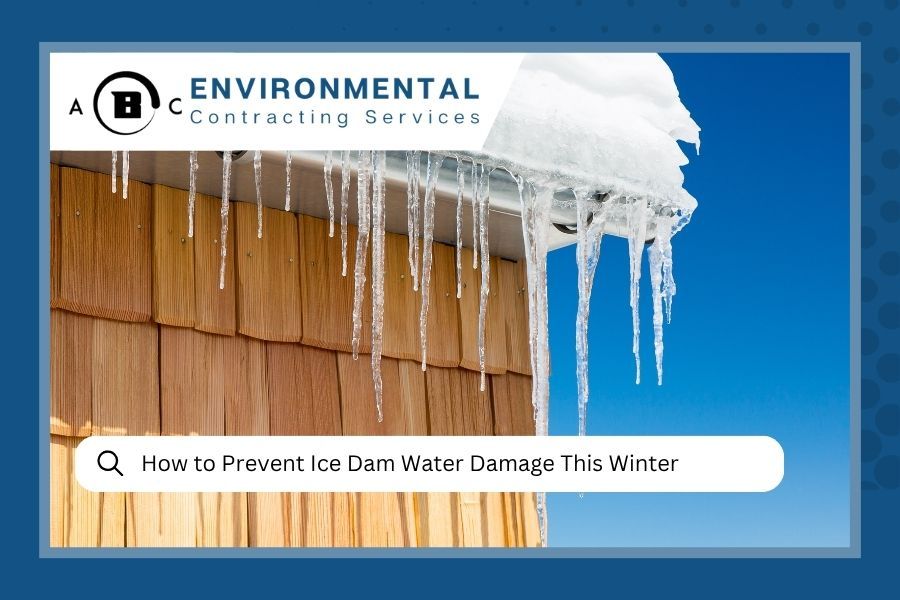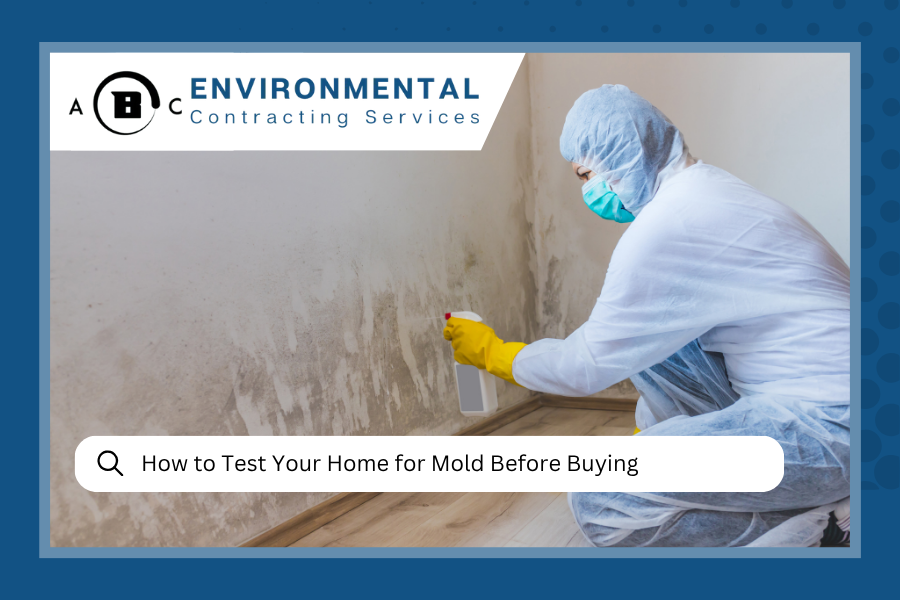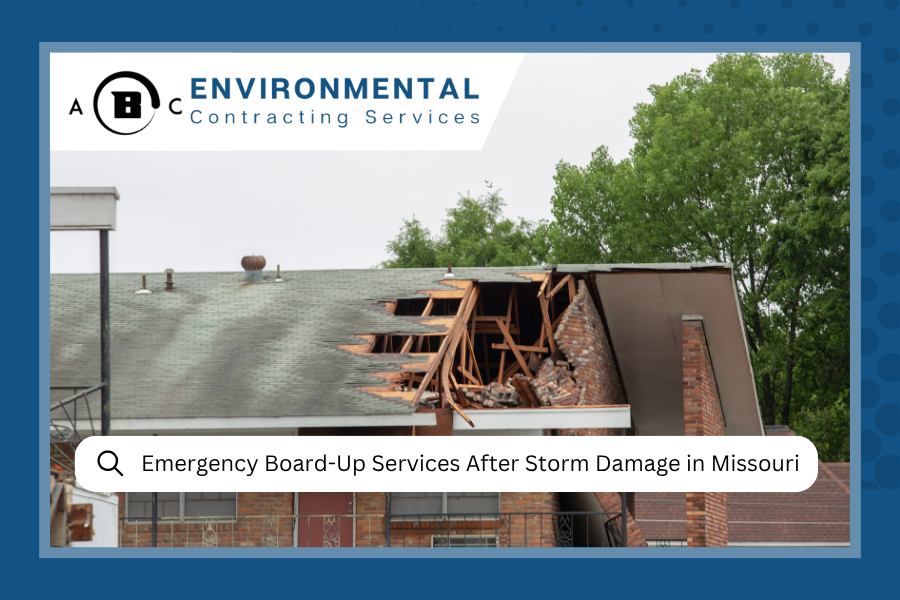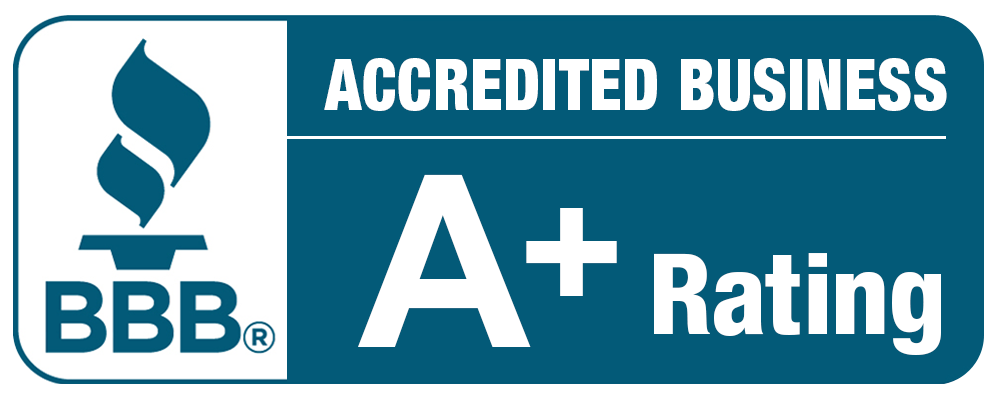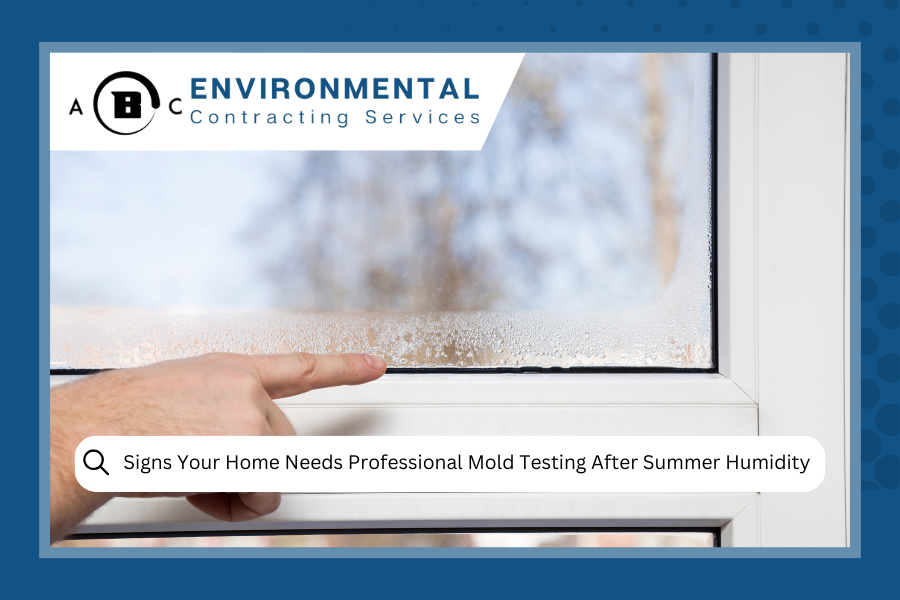
Signs Your Home Needs Professional Mold Testing After Summer Humidity
Jump to Section:
Summer in Springfield can be brutal on homes, especially when it comes to humidity. If you've noticed some funky smells or weird stains after this summer's heat and moisture, you might be dealing with more than just typical seasonal changes. Our team at ABC Environmental Contracting Services in Springfield specializes in professional mold remediation and has helped countless homeowners discover hidden mold problems that started with nothing more than high humidity levels.
Here's the thing about mold: it's sneaky. One day everything seems fine, and then suddenly you're wondering why your allergies are acting up or why that closet smells like a wet basement. Let's walk through the telltale signs that it might be time to call in the professionals for mold testing.
Why Summer Humidity Creates Perfect Mold Conditions
Missouri summers are like a mold convention, honestly. The combination of heat, humidity, and moisture creates exactly what mold spores need to thrive. When humidity levels climb above 60% (which happens pretty much every summer day here), mold can start growing within 24 to 48 hours. According to the EPA's guidance on mold and moisture control , indoor humidity should be kept between 30-50% to prevent mold growth.
The problem is that most of us crank up the AC and forget about proper ventilation. That creates temperature differences that lead to condensation in wall cavities, around windows, and in areas where we can't even see what's happening.
Missouri Summer Humidity Risk Scale
Safe Zone
Mold growth unlikely
Caution
Monitor closely
High Risk
Mold growth likely
Most Springfield area summer days reach 70%+ humidity levels
Visual Signs Your Home May Have Mold Issues
Discoloration and Staining
Keep an eye out for dark spots, fuzzy patches, or unusual discoloration on walls, ceilings, or around windows. Mold doesn't always look like the dramatic black spots you see in horror stories. Sometimes it shows up as:
- Light green or gray patches
- Yellow or brown stains
- White fuzzy growth (especially in basements)
- Black specks that look like dirt but won't wipe away
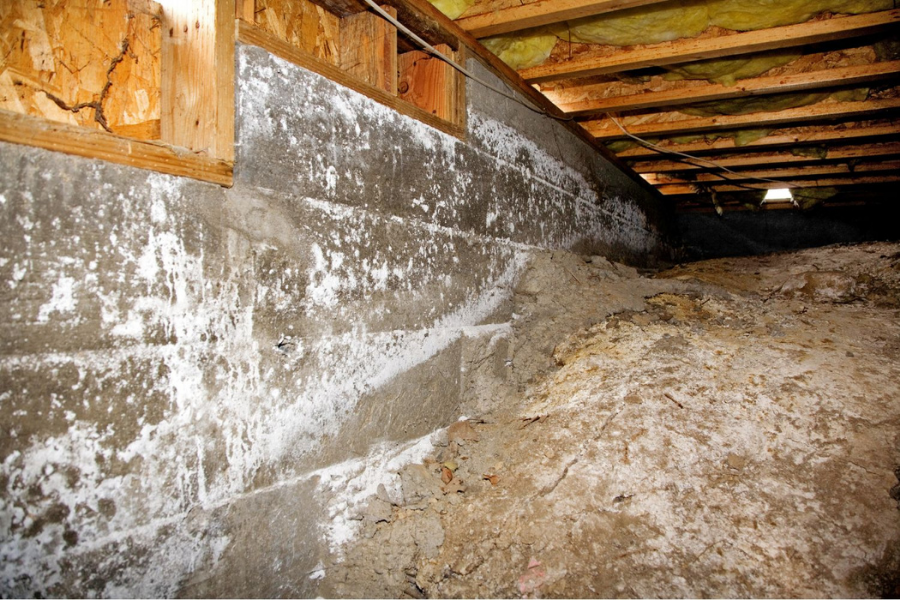
Basements are prime locations for mold growth due to naturally higher humidity levels and poor ventilation, especially during Springfield's humid summers.
Water Damage Red Flags
Even if you don't see mold directly, water damage often leads to mold growth. Look for water stains on ceilings, warped baseboards, or areas where paint is peeling or bubbling. These are prime spots for hidden mold colonies.
Having concerns about potential water damage?
Our certified team provides 24/7 water damage restoration to prevent mold growth before it starts.
Get Free Estimate →When Your Nose Knows: Smell-Based Detection
That Musty, Earthy Odor
Trust your nose on this one. If you walk into a room and immediately notice a musty, earthy smell that reminds you of wet leaves or old books, that's often your first clue. The smell tends to be stronger when humidity is high or after it rains.
Persistent Odors That Won't Go Away
Sometimes the smell isn't obvious, it's just that persistent "something doesn't smell right" feeling. If you've cleaned thoroughly and the odor keeps coming back, especially in areas like bathrooms, basements, or rooms with poor ventilation, mold could be the culprit.
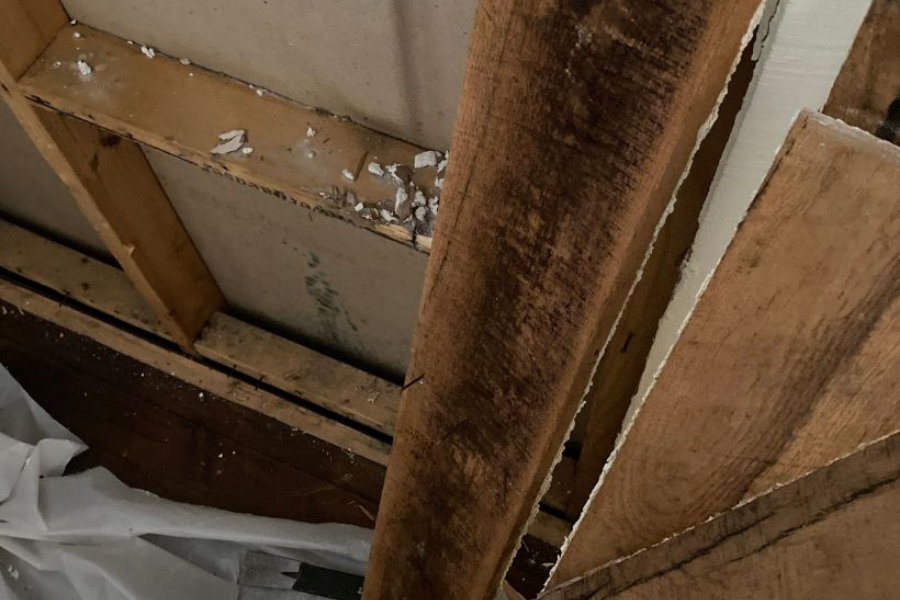
Mold often grows in hidden areas behind walls where moisture accumulates, making professional detection crucial for identifying problems before they spread.
Health-Related Warning Signs
Unexplained Respiratory Issues
Summer allergies are one thing, but if you or your family members are experiencing new or worsening respiratory symptoms that seem worse at home, it's worth investigating. Common symptoms include:
- Persistent coughing or throat irritation
- Increased asthma symptoms
- Nasal congestion that clears up when you leave the house
- Headaches that seem to happen more frequently at home
Skin and Eye Irritation
Some people are more sensitive to mold exposure and may experience skin rashes, eye irritation, or even fatigue when mold is present in their environment. The CDC provides comprehensive information about how mold exposure affects different people and what symptoms to watch for.
High-Risk Areas in Humid Climates
| Location | Risk Level | Common Signs |
|---|---|---|
| Basements & Crawl Spaces | High | Condensation on walls, musty odors, water intrusion |
| Bathrooms & Laundry Rooms | High | Around tubs, behind washing machines, grout lines |
| HVAC Systems | Medium | Trapped moisture in ductwork, around units |
| Windows & Doors | Medium | Condensation buildup, warped frames |
Basements and Crawl Spaces
These areas are mold magnets during humid summers. Poor ventilation plus natural moisture from the ground creates perfect conditions. Check for condensation on walls, musty odors, or any signs of water intrusion.
Bathrooms and Laundry Rooms
Rooms with high moisture levels need extra attention. Look around tubs, showers, and behind washing machines. Pay special attention to caulking, grout lines, and areas where different materials meet.
HVAC Systems and Ductwork
Your air conditioning system works overtime during humid summers, and if moisture gets trapped in ductwork or around units, mold can spread throughout your entire home through the ventilation system. This is especially concerning after storm-related water damage , which can create perfect conditions for widespread mold growth. Learning about proper asbestos identification is also important in older homes where multiple environmental hazards may be present.
When DIY Detection Isn't Enough
Hidden Mold Behind Walls
Sometimes mold grows in places you can't see, like inside wall cavities or under flooring. Professional testing can detect airborne spores and pinpoint problem areas that aren't visible to the naked eye.
Determining the Type and Severity
Not all mold is the same, and professional testing can determine exactly what you're dealing with and how extensive the problem is. This information is crucial for developing an effective remediation plan.
Professional Mold Testing: What to Expect
Our certified inspectors use specialized equipment to test air quality, surface samples, and moisture levels throughout your home. We'll identify not just where mold is present, but what conditions are allowing it to thrive, so we can address the root cause, not just the symptoms.
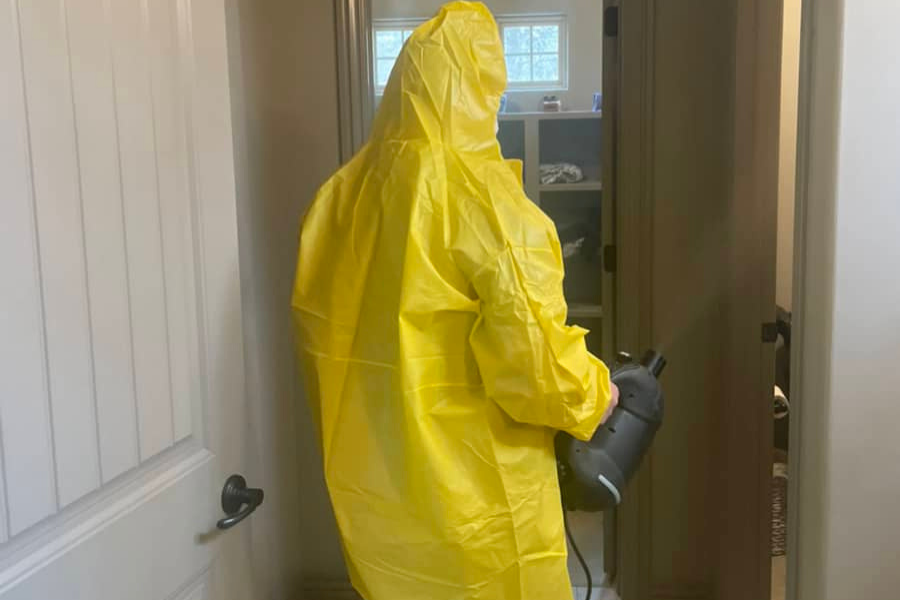
Professional mold testing uses specialized equipment to detect problems not visible to the naked eye, ensuring comprehensive identification and proper remediation planning.
The testing process typically includes:
- Air sampling in multiple rooms
- Surface sampling from suspicious areas
- Moisture readings in walls and other materials
- Visual inspection of high-risk areas
- Detailed report with findings and recommendations
Prevention Tips for Next Summer
- Keep indoor humidity below 50% with dehumidifiers
- Ensure proper ventilation in high-moisture areas
- Fix leaks and water damage immediately
- Clean and maintain HVAC systems regularly
- Use exhaust fans in bathrooms and kitchens
Professional mold testing gives you peace of mind and a clear action plan. Whether the results show minor issues that can be addressed with improved ventilation or more serious problems requiring professional mold remediation, you'll know exactly what you're dealing with. In some cases, extensive water damage may require complete reconstruction services to fully address both the moisture source and resulting mold growth.
Don't let summer humidity turn into a year-round problem. If any of these signs sound familiar, it's better to know for sure than to wonder and worry. For Springfield area residents, you can learn more about our services at our Springfield location page.
Ready for Professional Mold Testing?
If you're noticing any of these warning signs in your Springfield area home, don't wait until the problem gets worse. Our team at ABC Environmental Contracting Services in Springfield has over 20 years of experience helping families identify and resolve mold issues safely and effectively.
As a veteran-owned business, we take pride in protecting what matters most to you and your family. We offer free estimates within 24 hours and provide the kind of personal, trustworthy service that only a family-owned company can deliver.
Call us today at (417) 302-3010 or fill out our online form to schedule your professional mold inspection. We serve Springfield and the surrounding area with 24/7 emergency services and a satisfaction guarantee on all our work.
Frequently Asked Questions
How quickly can mold grow after summer humidity spikes in Springfield?
Mold can begin growing within 24-48 hours when humidity levels exceed 60%, which is common during Springfield area summers. In the Springfield region, where we often see humidity levels of 70-80% or higher, mold growth can accelerate even faster, especially in poorly ventilated areas like basements and crawl spaces.
What makes summer humidity mold different from other types of mold problems?
Summer humidity mold often develops gradually and may be harder to detect initially because it grows in hidden areas where warm, moist air accumulates. Unlike sudden water damage from leaks or floods, humidity-related mold tends to spread slowly behind walls, in HVAC systems, and around windows where condensation occurs regularly during hot, humid months.
Can mold from summer humidity affect my entire home's air quality?
Yes, especially if mold develops in your HVAC system or ductwork. During humid summers when air conditioning runs constantly, mold spores can be distributed throughout your entire home. This is why professional air sampling in multiple rooms is crucial for detecting the full scope of humidity-related mold problems.
Should I test for mold every summer in Springfield's humid climate?
While annual testing isn't necessary for every home, it's wise to test if you notice any of the warning signs mentioned in this article, especially after particularly humid summers. Homes with previous water damage, poor ventilation, or older HVAC systems may benefit from periodic testing during peak humidity seasons in the Springfield area.

